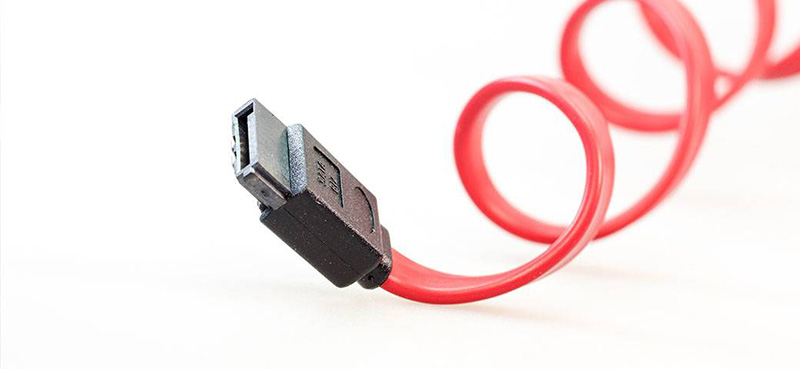
Checking data storage connection before starting recovery
Regardless of the logical structure of a storage, the data is still stored on a physical medium, thus, during the process of data recovery, a data recovery program works with a physical device anyway. A good piece of advice before starting retrieval of lost files is to make sure that the storage is connected properly.
Internally connected hard drives
If the operating system doesn’t display your disk in Windows Disk Manager, neither will data recovery software. You need to check if this disk is attached properly to the computer: examine the data connector and the power supply cable (whether they are connected firmly to the hard drive and have no breaks). Yet, if everything seems to be in place except for the disk, your drive can have physical damages and you should turn to a data recovery center to physically repair the disk.

Externally attached hard drives
Whereas hard disk drives attached externally via an ordinary USB cable are unlikely to cause you any problems (still, there should be an intact cable, good connection and all necessary system drivers), disk drives attached via a SATA/USB adapter may be troublesome, especially disks with the capacity of above 2 TB (2.5, 3, 4, 6 TB an so on).
The adapter may be incapable of transferring data addressed with big numbers because of its data transmission capacity. In order to access data on large disks, the adapter needs to indicate big numbers for data addresses. Old adapters are unable to work with such big numbers. For this reason, disk sizes of big disks connected via old adapters can differ from the real ones when displayed in Raise Data Recovery. The same problem may also arise with internal drives in case of a poor economy design or an older motherboard.

USB flash drives
USB flash drives are very simple to connect to the computer by inserting into a USB port. If your USB flash drive is not detected by the operating system, one of the problems may be that for some reason the operating system doesn’t have the necessary drivers. The system will ask you for drivers, which can be freely downloaded from the retailer's web site. Another reason for an undetectable USB flash drive may be a broken USB port. In this case, the system will neither show you any messages nor react to your inserting the drive or will detect it as "Unknown device". Please try a neighboring USB slot in order to determine the problem. If the system still doesn’t detect the flash drive, the reason may be related to the flash drive itself. In this case, you need to bring the drive to a data recovery center to get access to your data.
In case when the operating system recognizes your USB flash drive, but the program doesn’t display it among the listed storages, press Refresh drives to make the program update the information about the connected storages. Use this button for every new connection.

Memory cards
To connect a memory card to your computer you need a card reader being unimpaired, with an intact cable (if applicable) and good condition of slots for connection of a memory card. If the system doesn’t show your memory card, the problem may also be in the USB port itself. Try another one, which you can find on the front or back panel of your computer.
Working with the Raise Data Recovery program, you may come across a non-displayed memory card. In such a case, press Refresh drives to re-detect all attached storages.

Network Attached Storage
Network Attached Storage is a stand-alone data storing and sharing device which needs a local area network to establish communication with your computer and special software to access it over the network. Obviously, such software does not include data recovery utilities. For this reason, before starting data recovery from a NAS you need to take all the NAS disks out of the box and connect them to a computer for recovery.
Raise Data Recovery recognizes the disks separately. Furthermore, it assembles them into a RAID system, if the metadata contained inside each of the disks remains intact enabling such an assembly. Otherwise, you need a more professional solution capable of managing RAID assembly.
